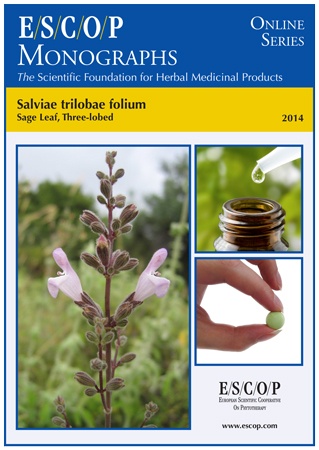
Salviae trilobae folium
Sage Leaf, Three-lobed
Salvia fruticosa Mill. (Salvia triloba L.fil)
Published 2014
Format: PDF.
 Online viewing (for only €30 per year, you can view online all the monographs)
Online viewing (for only €30 per year, you can view online all the monographs)
SUMMARY:
The herbal monograph summarises scientific studies and textbooks regarding efficacy, dosage, indications and safety to support the long-standing use of three-lobed sage leaf. The botanical definition of the herbal drug is the whole or cut, dried leaves of Salvia fruticosa Mill. [syn. Salvia triloba L.fil.].
Studies with its main characteristic constituents the essential oil with cineole as major compound, phenolic acids and flavonoids are included.
The therapeutic indications are inflammations and infections of the mouth and throat such as stomatitis, gingivitis, pharyngitis as well as dyspepsia.
Administration of three-lobed sage leaf addresses dosage; its duration of use; contra-indications; special warnings; special precautions for use; interactions with other medicinal products; other forms of interaction; in pregnancy and lactation; its effects on ability to drive; undesirable effects; overdose.
In vitro experiments with three-lobed sage leaf demonstrate antioxidant and radical-scavenging, acetylcholinesterase inhibitory, cytotoxic, spasmolytic, antimicrobial and antiviral, activities.
In vivo experiments in animals demonstrate antidiabetic, anti-inflammatory properties, as well as, central effects.
Preclinical safety data of three-lobed sage leaf and its essential oil indicated no mutagenic activity.
The selection of literature cited in the monograph is aimed at bringing together relevant information about the possible physiological roles of three-lobed sage leaf and its major constituents.
KEYWORDS:
- Salvia fruticosa Mill. (Salvia triloba L. fil)
- Salviae trilobae folium
- Sage Leaf, Three-lobed
- Stomatitis; Gingivitis; Pharyngitis; Dyspepsia